In 1937 a Memorandum to the Royal Yugoslav Government was presented by Vaso Chubrilovic on solving the “Albanian Question” in the Kingdom of Yugoslavia.
A Bosnian Serb Vaso Chubrilovic (1897−1990) was a historian, teacher, university professor, minister, a member of the Serbian Academy of Sciences and Arts, and politician. In his youth before WWI, he was a member of the secret patriotic organization and political movement the Young Bosnia and participated in the assassination of the Austro-Hungarian heir of the throne Archduke Franz Ferdinand and his wife Sophia in Sarajevo (administrative center of Bosnia-Herzegovina). After WWII, he was a high school teacher in Yugoslavia and professor of history at Belgrade University. Vaso Chubrilovic was as well as politically active as a political adviser for the Royal Government of Yugoslavia. After WWII, he became a member of the Communist Party of Yugoslavia (later the Union of the Yugoslav Communists) and due to this membership held various posts in the socialist Government of the Yugoslav Federation. At the same time, he was one of the most prominent members (academician) of the Serbian Academy of Sciences and Arts in Belgrade.
In 1937, Vaso Chubrilovic presented a Memorandum to the Royal Government of Milan Stojadinovic on solving the “Albanian Question” in the Kingdom of Yugoslavia. The Memorandum itself was a product of the author’s fear, vision, and even collective Serb paranoia about Muslim Albanian banditry, the policy of ethnic cleansing of Serbs, and terror over the local Christians in southern parts of Yugoslavia but primarily in the region of Kosovo-Metochia which at that time was divided between Serbia and Montenegro. It is of extreme importance to note that this fear of Albanian banditry and terror became in many aspects a reality during WWII and after 1945 up today especially after June 1999 when NATO occupied Serbia’s Autonomous Province of Kosovo-Metochia.
The 1937 Memorandum – historical background
The author of a Memorandum starts with the historical background of the “Albanian Question” on the territory of Yugoslavia by stressing the fact that this question is old and it has to be solved. The “Albanian Question” became important for the South Slavs in the Middle Ages but its importance became decisive by the end of the 17th century when a great number of ethnic Serbs have been displaced northwards from their former ancestral lands of the medieval Serbian state (Kosovo-Metochia, Rashka, and the western parts of the Vardar Macedonia) and were supplanted by the Muslim Albanian highlanders who have been supported as the Muslims by the Ottoman authorities. The Albanian highlanders came down from the North Albanian mountains to the fertile plains of Kosovo-Metochia. By penetrating to the north, Muslim Albanians spread in the direction of the South and West Morava Rivers and, crossing Mt. Shara (on the very border between Kosovo-Metochia and the Yugoslav Macedonia) descended in the direction of the Vardar River. In such a way, by the 19th century, the Albanian triangle was created – a wedge which based on its Debar-Rogozna axis in its ethnic hinterland, penetrated as far into Serbian lands as the city of Nish and separated Serbian ancient territories of Rashka from Vardar Macedonia and the valley of the Vardar River.
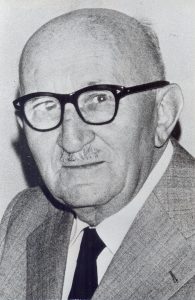
This ethnic Albanian wedge that is inhabited by the warmonger and anarchist elements of Albanian primitive highlanders resulted in the gradual process of hampering any strong cultural, educational, and economic connection between Serbian northern and southern lands in the 19th century before the 1912−1913 Balkan Wars. That became the focal reason why Serbia was constantly unstable, until 1878 (when Serbia got international recognition of her political independence on the 1878 Berlin Congress), when Belgrade managed to establish and maintain continuous connections with Vardar Macedonia (part of Ancient Serbia), via the town of Vranje and the Mt. Black Mountain nearby the city of Skopje, in order to exercise the cultural and political influence within the region of the valley of the Vardar River. That was anticipated for the reason of favorable geographical and transportation connections as well the historical traditions in this region.
However, although the Bulgarians obtained their state independence later than Serbia (in 1908), at first they had greater success (since 1870 when the Bulgarian Exarchate was established by the Ottoman Sultan). This explains why there are permanent settlements of South Slavs from the city of Vidin in the north (in North Bulgaria on the Danube River) to the town of Ohrid in the south (in Vardar Macedonia near the border with Albania). Serbia started to cut pieces off this ethnic Albanian wedge since the time of the First Serbian Uprising against the Ottoman yoke in 1804−1813. Vaso Chubrilovic continued his Memorandum by the claim that from the time of the creation of the Kingdom of Serbs, Croats, and Slovenes in 1918 (since 1929 the Kingdom of Yugoslavia), it became the duty of the state to eliminate the remains of the Albanian triangle (that was created by the occupation of Serbian land and terror over the local Serbs). Otherwise, the Albanians will continue their banditry way of penetration into Serbian territories and ethnic cleansing of the Serbs.
The 1937 Memorandum – the fundamental Yugoslav mistake
However, the state of Yugoslavia did not stop Albanian occupation and terror for several reasons.
The most significant reason was basically a mistake of the state authorities of Yugoslavia as they forgot where they are and, therefore, they wanted to solve all the focal ethnic problems of the troubled and bleeding Balkans by using Western methods. The Ottoman Empire brought to the Balkans the customs of the Sheri’s Law, according to which victory in war and the occupation of the land confers the right to the lives and property of the subject inhabitants (in this case of the Christian Serbs). Even the Balkan Christians learned from the Ottoman authorities that not only state power and domination, but as well as home and property are won and lost by the sword.
The concept of the relations of private ownership of land in the Balkans was to be softened to some extent by laws, ordinances, and other international agreements issued under pressure from Europe. However, this concept has been to some degree the focal lever of the Ottoman state and the Balkan states to this day. It is not necessary to refer to the remote past as it can be mentioned in several cases of the recent period. For instance, the removal of ethnic Greeks from Asia Minor to Greece and of ethnic Turks and other Muslims from Greece to Asia Minor, the recent removal of Turks from Bulgaria and Romania to Turkey. While all the Balkan states, since 1912, have solved or are on the way to solving the problems of national minorities by mass removals, the Yugoslav state stuck to slow and sluggish methods of gradual colonization.
Nevertheless, the results of such minority policy were negative and it is in the best way shown by the statistics from the 18 districts which comprise the Albanian triangle. From such evidence, it emerges that the population is greater than the total increase in Serb population from natural growth plus new settlers. In other words, statistics show that from 1921 to 1931 the ethnic Albanian population increased by 68.060 while the Serbs show an increase of 58.745. Consequently, a difference was 9.315 in favor of the ethnic Albanians. It has to be remarked that such birth-rate situation was possible in Yugoslavia called by all her enemies as “prison of nations”. However, in the cases of all Yugoslav neighbors, the balance between ethnic majority and minorities was clearly going in the favor of the first group like in Greece, Albania, Romania, or Bulgaria.
The Memorandum’s author is further writing about the fact that taking into account the intractable character of the Albanians, the pronounced increase in their numbers, and the ever-increasing difficulties of colonization by the old methods, with the passage of time this disproportion will become ever greater and eventually put into question even those few successes the Yugoslav state has achieved in its policy of colonization after WWI (in Kosovo-Metochia). It has to be noticed here that all of those Serb colonists (some 100.000) from the interwar period have been expelled from Kosovo-Metochia during WWII by the fascist Albanian authorities of a Greater Albania committing in this way an act of genocide and ethnic cleansing at least according to the UN Genocide Convention from 1948 (came into force in 1951).
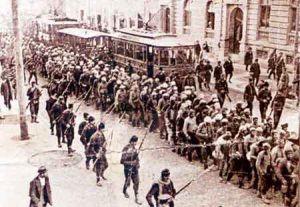
The focal cause for the lack of success of the Yugoslav policy of colonization in the regions populated by Albanians was, according to the author of the Memorandum, that the best land remained in the hands of Albanians (who took it from the Serbs). Vaso Chubrilovic concluded on this place that the only possible way for the Serb mass colonization of those regions was to appropriate (in fact, Serb) land from the Albanians (in fact, to return the land to the legal owners – the Serbs). The crucial point of the Memorandum was that the Serbs lost the historical opportunity to solve the “Albanian Question” within Yugoslavia immediately after WWI during the time of the mass Albanian rebellion and anti-Yugoslav actions of the Muslim Albanian armed bands who did not want to live in Yugoslavia settled predominantly by the Christians. According to the Turkish example of settling the “Greek Question” in Turkey in 1922−1923, the “Albanian Question” in Yugoslavia could be settled in a similar way – in this case by fostering part of Albanians to return back to their homeland of Albania, by not legalizing their usurpations and by buying their properties. Here, it has to be mentioned that only Serbophobic Croats and Albanians claim that Vaso Chubrilovic in this Memorandum advocated forcible expulsion of all Albanians from Yugoslavia that is not coming from the text itself.
Nevertheless, in the next part of the Memorandum, the author deals with the focal mistake of the Yugoslav post-WWI concept about the right to possession of the land, instead of taking advantage of the concept of the Albanians themselves about their ownership of the land they had usurped but the Yugoslav state not only legalized all of these usurpations but worse still, accustomed the Albanians to West European ideas of private property. Before that, the Albanians could never have had these ideas. Therefore, in this way, the Serbs ourselves handed them a weapon to defend themselves, to keep occupied the best land for themselves and make the nationalization of Kosovo-Metochia as the region most important to the Serbs practically impossible.
The 1937 Memorandum – the geostrategic importance of the Albanian bloc
The ethnic Albanian bloc around Mt. Shara had great national, state, and geostrategic importance for Yugoslavia as this micro-region is connecting the regions around the valley of the Vardar River with the ancient Serbian territories. The continuity of Serbian statehood and ethnic life in compact masses was interrupted by the Albanian occupation of Serbian land and, therefore, until the ancient uninterrupted connection of Serbia and Montenegro with Vardar Macedonia is re-established, the Serbs will not be secure in their own possession of this territory. Ethnically speaking, the Macedonian Slavs will fully unite with the Serbs only if they will enjoy true ethnic support from the Serbian motherland, which they have lacked to this day. However, such support the Macedonian Slavs can get only when the Albanian bloc is destroyed and consequently the Albanian occupation of Serbian land will stop.
From the military and geostrategic points of view, the ethnic Albanian bloc was occupying one of the most significant positions of Yugoslavia that were the starting point from which the Balkan rivers are flowing to the Adriatic Sea, the Black Sea, and the Aegean Sea. The holding of this strategic position to a large degree determines the fate of the Central Balkans but in particular the fate of the focal Balkan communication line from the Grand Morava River via the South Morava River to the Vardar River. Historically, it was not accidentally that many decisive battles for the fate of the Balkans have been fought on this communication line. In the 20th century, the Memorandum’s author claimed, only that country which was inhabited by its own people can be sure of its security.
Here it has to be stressed that in practice, the history of all Balkan states in the 20th century except Serbia, Montenegro, and Vardar Macedonia was a time of ethnic homogenization which resulted in either expulsion or assimilation of ethnic minorities. For instance, present-day Albania almost does not have ethnic minorities and an extremely brutal policy of the assimilation of ethnic minorities was done after WWII at the time of the communist rule of Enver Hoxha (1945−1985). Nevertheless, Vaso Chubrilovic continues with the constatation that it was an imperative duty for Yugoslavia not to allow these geostrategic positions of the highest importance to be in the hands of a hostile alien element (the Albanians). This element is more dangerous as it has the direct support of its own national state of the same race (Albania) which always was hostile toward Yugoslavia and Serbs. It was true that Albania was not a powerful state but even in such conditions, Albania became a base of Italian imperialism and penetration into the Balkans, i.e., Yugoslavia. The Yugoslav ethnic element, which will be willing and able to defend its own land and its state, is the most reliable instrument against the Italian penetration into Yugoslavia.
Besides the bloc of Albanian 18 districts in Yugoslavia, the Albanians and other national minorities in the other parts of the southern regions were dispersed but, therefore, have not been so politically dangerous to the Yugoslav national and state existence. In other words, if the Yugoslav state will succeed to nationalize the region around Mt. Shara it would mean eliminating Albanian irredentism forever and at the same time ensuring Yugoslav state and national power within these territories.
For Vaso Chubrilovic, the danger of Albanian irredentism and banditry for the Yugoslavs could not be eliminated by means of gradual colonization alone as the Albanians were the only people who managed not only to resist the nucleus of Serbian states Rashka (Serbia) and Zeta (Montenegro) but as well as to harm the Serbs, by pushing Serbian ethnic borders northwards and eastwards. Whereas in the past Serbian ethnic borders have been shifted to Subotica in the north (before 1918 in South Hungary after WWI in North Yugoslavia) and the Kupa River in the northwest (today in Croatia), the Albanians drove Serbs from the Skadar region (today in Albania) that was in the 11th century the capital city of Serbian state of Zeta and from Kosovo-Metochia.
To be continued
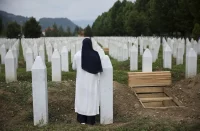
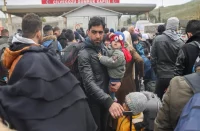
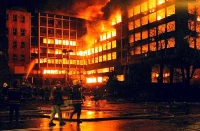




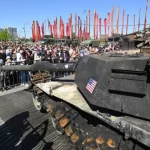






The photo publish in the article under the title “Expulsion of Albanians” is incorrect. This is a photo from the First Balkan War in 1912 on which you can see Ottoman prisoners of war (captured soldiers) after the Kumanovo Battle in October 1912. The photo is nothing to do either with “expulsion” or “Albanians” unless some of them have been captured in the Ottoman uniforms.
BTW, this Memorandum is a product of one person and it was never accepted or even discussed by Yugoslav authorities. Nevertheless, Prof. Chubrilovic showed by this Memo to be a man of providence – predicting what Albanians will do to Serbs if Yugoslavia will not react first. When he submitted this Memo, in Kosovo it was 50%/50% of ethic balance between Albanians and Serbs. Today the balance is 5% Serbs and 95% Albanians.
Thanks a lot. We’ll find a correct picture.
Sotirovic=goebbels
Rezi vlore = Eichman
Sotirovic=goebbels
pedram=Himmler
The contested photo “Expulsion of Albanians” in this article is in fact about escorting of Turkish war prisoners in Belgrade after the 1913 Bitola Battle in Vardar Macedonia (a battle after the Kumanovo Battle). It is true that huge number of Muslim Albanians from Kosovo, Macedonia and Albania took participation in the First Balkan War of 1912-1913 on the Ottoman side and therefore probably there are a lot of them on the photo. However, they became war prisoners not as ethnic Albanians but as Ottoman soldiers. After the war, according to the London Peace Treaty on May 30, 1913 all prisoners of war from all sides have been freed.
Dear readers,
Thank you to all of you who have been sending to my e-mail address notice about the illustration called “The Expulsion of the Albanians” published as a part of my article.
On this occasion, I would like to inform the readers that the choice of illustrations concerning this article is only the responsibility of the editorial board of the OR magazine but nothing to do with me. To the editor of OR I sent another illustrations as a part of the article but unfortunately they have not be taken into consideration. Nevertheless, the published illustration has nothing to do with the expulsion of the Albanians as it is dealing with the prisoners of war.
The first project of Greater Albania only for ethnic Albanians was drafted already in 1878 by the First Prizren League. According to the project, all Serbs as Christians were to be expelled from Kosovo.
Key facts about Kosovo’s Islamic Albanian minority of Serbia and the century long drive by Islamic extremists to exterminate Kosovo Serbs from that region:
1389—Muslims defeat Christian Serb defenders in Kosovo, depopulate the area and invite mountain tribe of Albanians, in exchange for converting to Islam, to take over pillaged land from Serbs.
1594—Sinan Pasha, an ethnic Albanian, who was a commander in the Ottoman Turkish Empire, burned the relics of St. Sava at Vracar, Belgrade. St. Sava is the Saint that brought Serbs into Christianity.
1878—Albanian nationalist leaders meet in Prizren, known as the First League of Prizren, to announce the creation of a Greater Albania, which will include all areas settled by Albanians, including Kosovo-Metohija, western Macedonia, known as Illirida, southern Montenegro, and northern Greece, Chameria. This is when the Kosovo or “Kosova” separatist agenda starts.
1878—Ottoman Turkish forces put down Albanian insurgency to create a Greater Albania. This was the first attempt to create an Albanian “Kosova” by an insurgency or by military force. A century later, another Greater Albania insurgency would have NATO and US backing.
1900-1918—Austria-Hungary and Italy are sponsors of a Greater Albania and support Albanian expansion in the Balkans, at the expense of Serbia.
1912—Albanian ultranationalists seize Skopje in Macedonia as part of a Greater Albania.
1920—After borders of “Jugoslavia” are legally settled under international law and recognized by the League of Nations, Albanian separatists launch a terrorist insurgency in “Kosova”, murdering Serbian civilians and police. This is known as the “kachak movement” and is the start of Albanian attempts to take over “Kosova” by military or armed force.
1941—Adolf Hitler and Benito Mussolini invade, occupy, and dismember Yugoslavia. They make “Kosova” a part of a Greater Albania under Mustafa Kruja. Western Macedonia is also made a part of Greater Albania by Hitler and Mussolini.
1941-1944—“Kosova” is made “independent” and part of a Greater Albania by Adolf Hitler. This is when Albanian ultra-nationalists realized their goal to create a Greater Albania and an independent Kosova under Adolf Hitler and Benito Mussolini.
1943—The Second League of Prizren, sponsored and established by Nazi Germany, reaffirms the commitment to create and maintain an independent “Kosova” and a Greater Albania under Nazi sponsorship. Later, the US and EU would replace Nazi Germany as the sponsor of Greater Albania.
1944—Albanians create a Nazi Waffen SS Division, Skanderbeg, made up mostly of Kosovo Albanian Muslims, “Kosovars”. These Albanian Muslim Nazi SS troops murder thousands of Kosovo Serbian Christians and drive thousands of other Kosovo Serbs out of Kosovo.
1944—Kosovo Albanian Muslims play a role in the Holocaust, the murder of European Jews. The Albanian “Kosovar” Skanderbeg Nazi SS Division rounds up Kosovo Jews who are sent to the Nazi concentration camp at Bergen Belsen where they are killed.
1948—The U.S. brings Midhat Frasheri, the leader of the Nazi/fascist Balli Kombetar, National Front, whose goal is a Greater Albania that includes Kosovo, and other wanted Albanian “Kosovar” war criminals, such as Xhafer Deva and Hassan Dosti, to the U.S. to form anti-Communist forces for the takeover of Albania. The U.S. put the Communist regime in power in Albania then sought to overthrow it by means of “regime change”.
1951—The U.S. organizes and launches Operation Fiend, one of the first experiments in “regime change” in Albania. Frank Wisner is one of the leaders of the project. His son would lead the efforts in 2006 to create a Greater Albania, an independent “Kosova”, which his father failed to achieve.
1968—Albanian separatism in Kosovo emerges. Closer tries with Albania are established.
1969—Kosovo Albanians begin closer ties with Tirana and begin importing textbooks and teachers from Albania and create their own Albanian school system and university. The “Albanianization” of Kosovo begins.
1974—The Communist dictator Josip Broz Tito changes the Yugoslav constitution giving Kosovo Albanians control of Kosovo. Albanians control every area of Kosovo from the police to teachers to judges.
1981—Albanians in Kosovo demand independence or secession from Yugoslavia. They demand to be a Republic which is code for independent or a part of Albania. They demand: “We Want a Unified Albania!” Dozens are killed in separatist riots. Serbian Patriarchate in Pec is burned down but no one knows how or why.
1982—British historian Nora Beloff notes that “ethnic cleansing” originated in Kosovo when Albanian Muslims killed or drove off Serbs. Albanians begin terror campaign of ethnic cleansing against Kosovo Serbs. From 1981-1989, an estimated 20,000 Kosovo Serbs are driven out of Kosovo by Albanian ultranationalists.
1982—Ethnically motivated murders of Kosovo Serbs begin with the murders of Kosovo Serbs Danilo Milincic and Miodrag Saric.
1985—Kosovo Serb Djorje Martinovic is “found with a broken bottle up his anus.” Albanian attackers sodomized him to force him out of the province to create an ethnically pure Kosova. US media claims that Martinovic was a closet homosexual who injured himself. The brutal sodomy of Martinovic inflames passions in the rest of Serbia.
1987—Fadil Hoxha, leader of Kosovo Albanians, advocates that Albanian Muslims rape Kosovo Serb women.
1991—Albanian separatists respond by proclaiming Kosovo a republic, which is tantamount to independence, which is recognized only by neighboring Albania. Albanian separatists gain sponsorship of a Greater Albania by contributing money to Thomas Lantos, Robert Dole, and Joe Biden. The U.S. becomes the sponsor of Greater Albania.
1996—A violent and armed terrorist and separatist group emerges, the KLA/UCK, whose goal is to create a Greater Albania, an independent “Kosova”. KLA begins killing Kosovo Serb civilians and police. Dozens of Yugoslav policemen, Serbs and Albanians, are brutally murdered by the KLA.
April, 1998—95 percent of the Yugoslav population rejected international mediation on Kosovo in a referendum. The so-called Balkan Contact Group imposed new international sanctions against Yugoslavia even though the decision was by a majority of the Yugoslav population, that is, was democratically determined.
July-August, 1998—The KLA separatists takes over 40 percent of Kosovo by force, by killing Yugoslav police and driving Kosovo Serbs out. The KLA terrorist groups are well-armed and supplied. The U.S. is one of the backers of the KLA separatists or terrorists.
1998—US State Department declares the KLA separatists are “terrorists”. US media dismisses the pronouncement.
1998—US media dismiss the fact that the Kosovo conflict is an illegal land grab, a separatist, ethnic war to create a Greater Albania. Instead, the US media concoct a deception that the conflict is about “greater rights” and “genocide”, when it is about Greater Albania, an independent, ethnically pure “Kosova”.
October, 1998—NATO plans airstrikes against Yugoslav targets, which would later include hospitals, nursing homes, passenger trains, TV stations, power grids, factories, and busses. Many of these attacks are war crimes under international law.
January 15, 1999—A “massacre” is manufactured in Racak by the US media and government. In fact, those killed were KLA separatists who had murdered Serbian policemen and had been killed in combat against Yugoslav police.
February, 1999—At a staged peace conference at Rambouillet, the US demands that Serbia allow Kosovo to become an independent nation after three years and that US and NATO troops be allowed to occupy Serbia. The US diktat was meant to force a war which the U.S. had long been planning. Rambouillet was a transparent sham.
March, 1999—Yugoslavia’s democratically elected leaders reject the US peace deal as tantamount to dismemberment and military occupation, unacceptable to a sovereign state.
March 24, 1999—NATO launched air strikes against Yugoslavia for 78 days, killing thousands of Serbian civilians. The KLA and U.S. advisers create a fake humanitarian catastrophe by telling and even forcing Kosovo Albanians to flee into Albania and Macedonia Yugoslav forces are falsely blamed for driving out Albanians. The U.S. scores a huge propaganda success with images of refugees.
June 10, 1999—NATO forces Slobodan Milosevic to withdraw Yugoslav forces from Kosovo and to allow NATO to occupy it. NATO occupies Kosovo.
June 12, 1999—After 50,000 NATO peacekeepers begin deployment in Kosovo, over 200,000 Kosovo Serbs, Roma, Gorani, and Jews are forced out of Kosovo by Albanians. Thousands of Kosovo Serbs are murdered by Albanians as NATO takes control of the province. Over 150 Serbian Orthodox Churches would be destroyed by Albanian Muslims protected by NATO troops.
March, 2004—March Pogroms: Albanians attack the last remaining Kosovo Serbs to drive them out of the province to create an ethnically pure Shqip Kosova.
October, 2006—Serbia held a referendum and approved a new constitution which declared that Kosovo was an integral part of Serbia. This decision had the support of the majority of the population of Serbia, that is, was democratically determined
January 21, 2007—Serbia held parliamentary elections where the Radical Party won the most votes, although not enough votes to form a new government.
April, 2007—Russia rejected the Marti Ahtisaari proposal in the U.N. Security Council because it violated Serbian sovereignty by supporting Albanian separatism.
June, 2007—U.S. President George W. Bush claimed that Kosovo had to be independent “sooner rather than later.” This is an issue for the UN to be decided under international law, however, not a decision for the President of the U.S.
1999 — Albanian Islamic terrorists, popularly referred in Western media as “rebels”, pose with severed heads of Kosovo Serbs after a beheading session. Beheading is a popular way of slaying among Muslims.
August, 2007—Envoys from the U.S., EU and Russia began 120 days of further negotiations between Albanian separatists and the Serbian government in order to reach an agreement. No agreement was forthcoming because the only “agreement” the U.S. was pushing was an independent “Kosova”. There was nothing to negotiate about. The negotiations were a sham and a hoax.
December, 2007—Albanian separatist efforts fail at the U.N. The U.S. and Albanian goal is then to unilaterally declare independence outside of international law and the UN Charter, which is illegal and violates the sovereignty of Serbia and denies the will of the majority of Serbs. The majority of the Serbian population rejects the secession of Kosovo by Albanian separatists. This decision is reached by means of the democratic process.
February, 2008—Having failed to achieve their separatist agenda through international law and in the U.N., the U.S. switched gears and told the Albanian separatists to unilaterally declare an independent “Kosova”. This is an illegal act which violates all international norms and conventions and laws. The U.S. reliance is on military force only. The illegal measure is justified by force only.
The list is done by the US scholar Carl Savich
Sotirovic you are a frustrated serbian chauvinist
To Rezi vlore
V. Sotirovic is not Serbian as he is Greek from North Macedonia. BTW, he is university professor and excellent scholar who is writing the truth.
Who are you Mr. Rezi vlore? Frustrated Albanian war criminal from KLA/UCK terrorist organization responsible for ethnic cleansing and genocide in Kosovo over Serbian population?